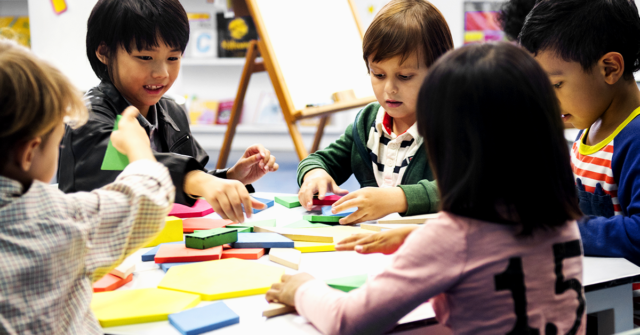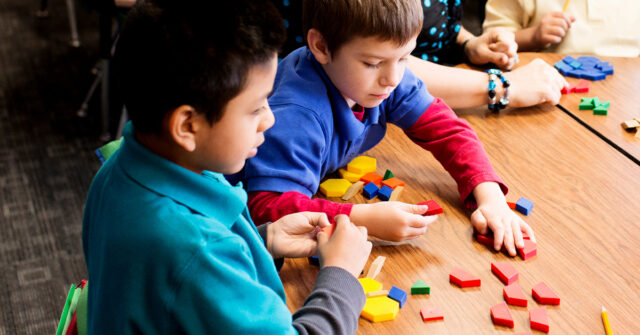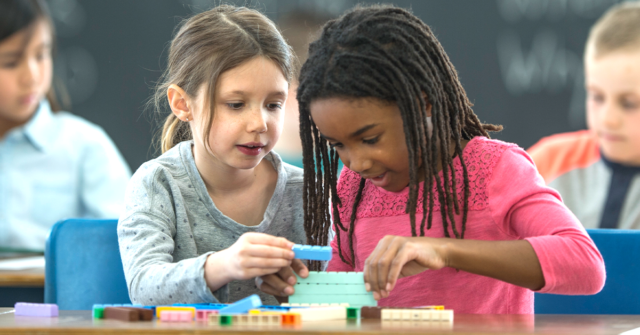
Elementary school math does more than lay the groundwork for future academic success, it shapes a child’s first impression of what math is. These early experiences can influence a student’s confidence, curiosity, and attitude toward math for years to come. That’s why it is so important to make math fun.
When students enjoy what they’re doing, they’re more likely to persist through challenges, take risks, and develop a growth mindset. Games are a great opportunity for students to explore math concepts through play, discovery, and meaningful challenges.
What is Game-Based Learning?
Game-based learning uses interactive and adaptive games to create an immersive learning experience, transforming math into a personalized journey of exploration and play. Platforms like Matific are designed to foster conceptual understanding, spark critical thinking, and keep students engaged. Each activity responds to the learner’s pace and thinking process, turning every challenge into an opportunity to explore and grow.
Games naturally encourage experimentation and perseverance, which are important traits for meaningful learning. By delivering instant feedback, learners can quickly understand and learn from their mistakes. Game-based learning often includes collaboration and friendly competition, which can strengthen teamwork and social skills.
Importance of the Productive Struggle
Why are games so good at keeping us engaged? Dr. James Paul Gee theorized that it was because they are pleasantly frustrating. Good games have challenges that feel hard but are still doable. Players can see that even when they fail, their efforts are paying off and they are making progress.
In education, this concept is known as the productive struggle. It’s the idea that when learning is hard, students learn better. It’s okay for students to feel frustrated because once they do something creative to figure out a concept, it will make them feel more confident in themselves. It’s important for teachers to support their efforts and encourage students to work through their frustration.
Games are the perfect medium for productive struggle. Games naturally encourage perseverance—they invite students to try, fail, reflect, and try again, all while keeping them engaged and motivated.
The Power of Games in Personalized Learning
Every student brings a unique set of strength, interests, and learning needs to the classroom. Personalized learning embraces these differences by offering students the right support, challenge, and pacing to help each one succeed.
Educational games are especially well-suited to support personalized learning. Platforms like Matific use adaptive technology to continuously analyze student responses, making it easy to adjust the difficulty level, provide targeted support, or introduce new concepts when students are ready. This ensures students engage in productive struggle.
Personalized learning through games also supports differentiation. In a single classroom, students may be at different levels of understanding. Game-based platforms can offer individualized experiences without requiring teachers to create separate lesson plans for every student.
Examples of Math Games
While repetition and memorization have their place, it’s important students conceptually understand math concepts and the reasoning behind it. One way to help you students develop deeper understanding is to teach math operations in more creative ways. Here are some examples:
- Teaching addition through the idea of counting
- Teaching multiplication as a form of addition
- Using real-life scenarios
- Using manipulatives to enforce concrete understanding
These examples can be taught using a game-like approach. For instance, imagine a classroom activity where students are asked to count apples: some on the ground and some in a basket. As they count, they are also practicing addition. In another setup, students might see three baskets, each holding five apples. Instead of asking them to multiply 3 x 5, you can ask, “How many apples are there in total?”. As they group and count the apples, they will begin to see multiplication as repeated addition.
Personalized Learning in Action with Matific
Making math fun and helping students develop a confident mindset towards the subject is at the heart of Matific’s approach. Through playful activities and interactive games, Matific encourages curiosity and persistence, helping young learners build foundational skills while enjoying the process.
Editor’s note: This blog was originally written for Matific in 2021. It has been edited and updated for the Heinemann blog in 2025.
***
Ready to dive deeper into effective math instruction?
Download the Matific Pedagogy E-book to explore the research-based principles behind Matific and how they support meaningful, student-centered learning.
Explore the research-based principles behind Matific


